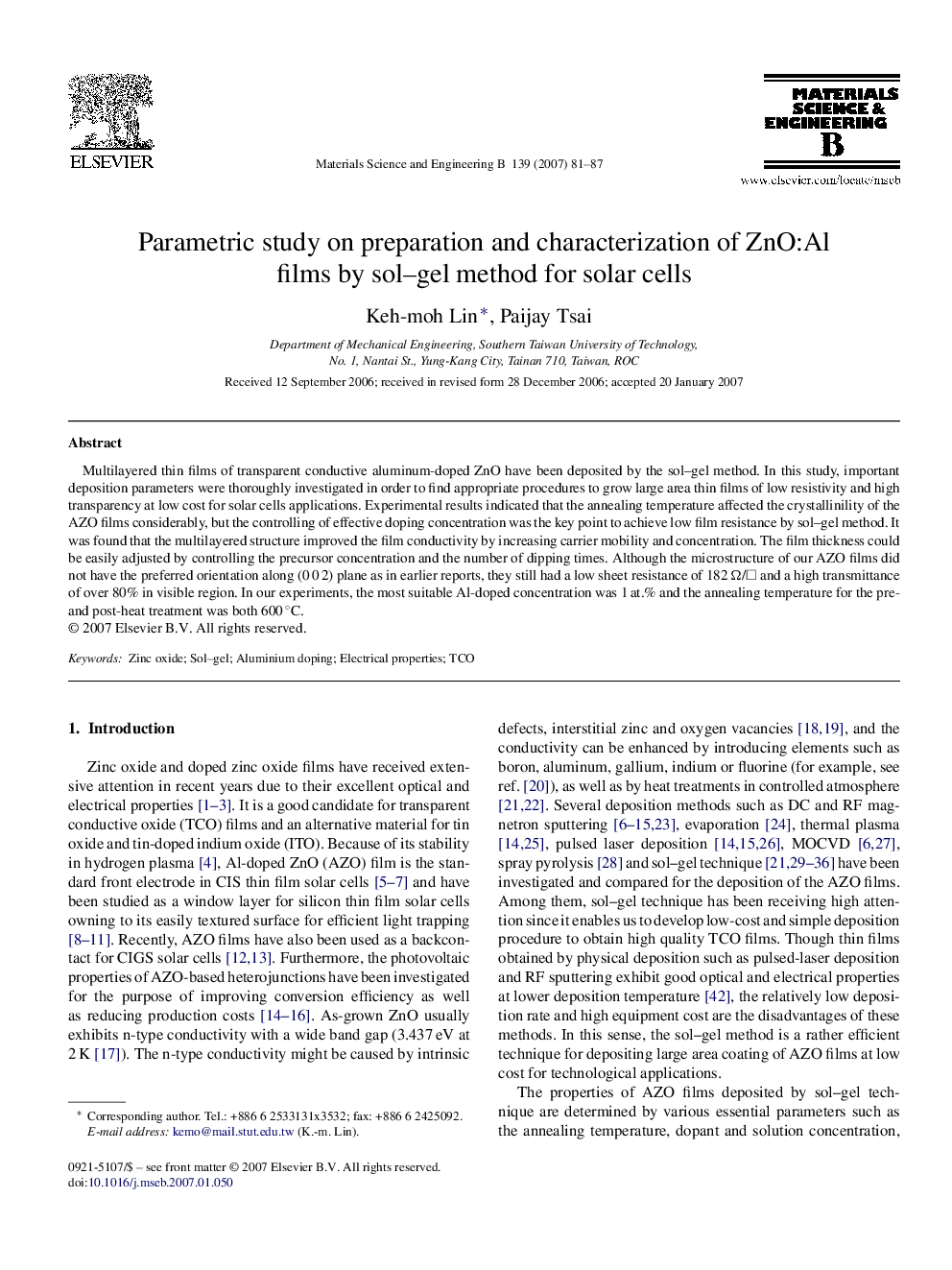| Article ID | Journal | Published Year | Pages | File Type |
|---|---|---|---|---|
| 1531458 | Materials Science and Engineering: B | 2007 | 7 Pages |
Multilayered thin films of transparent conductive aluminum-doped ZnO have been deposited by the sol–gel method. In this study, important deposition parameters were thoroughly investigated in order to find appropriate procedures to grow large area thin films of low resistivity and high transparency at low cost for solar cells applications. Experimental results indicated that the annealing temperature affected the crystallinility of the AZO films considerably, but the controlling of effective doping concentration was the key point to achieve low film resistance by sol–gel method. It was found that the multilayered structure improved the film conductivity by increasing carrier mobility and concentration. The film thickness could be easily adjusted by controlling the precursor concentration and the number of dipping times. Although the microstructure of our AZO films did not have the preferred orientation along (0 0 2) plane as in earlier reports, they still had a low sheet resistance of 182 Ω/□ and a high transmittance of over 80% in visible region. In our experiments, the most suitable Al-doped concentration was 1 at.% and the annealing temperature for the pre- and post-heat treatment was both 600 °C.
